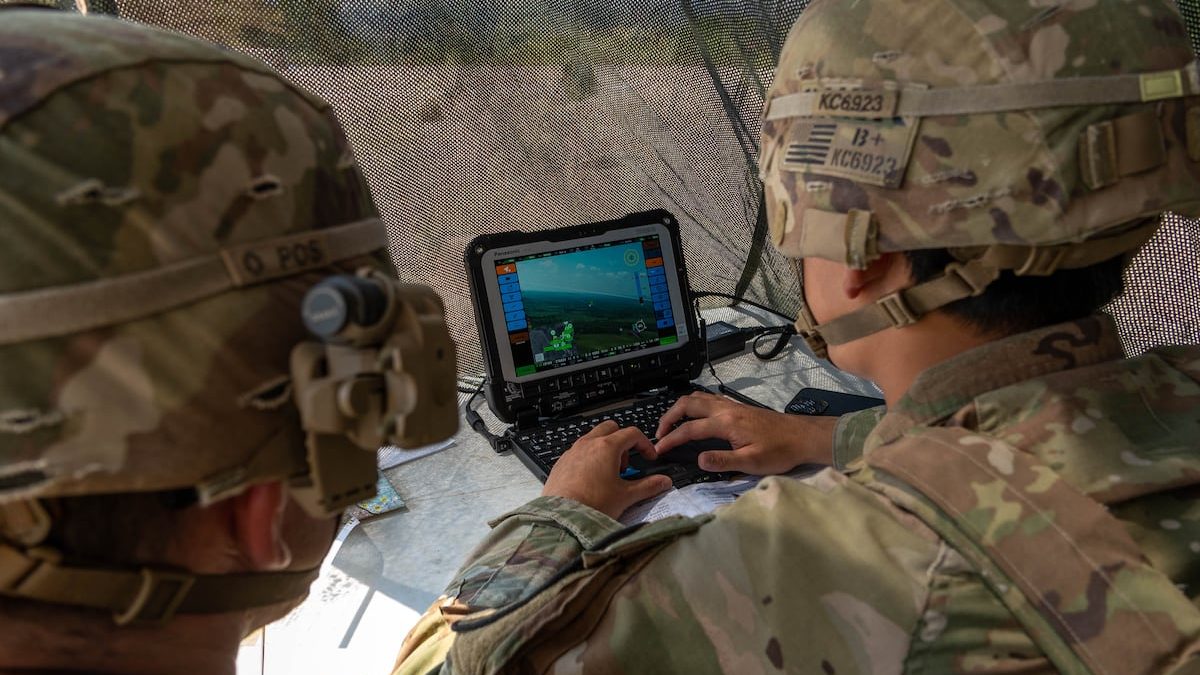Soldiers with the Army’s 1st Cavalry Division recently tested the Switchblade 600 Loitering Munition System during an exercise at Fort Hood’s eastern training area, marking the first time the system has been live-fired on the Texas installation.
Soldiers from 2nd Armored Brigade Combat Team in September conducted the trial in support of the Army’s Transformation in Contact initiative aimed at modernizing armored formations for future conflicts.
Part of that ongoing effort includes familiarization with the Aerovironment-produced system, which has already been put to the test by a handful of Army units, according to a service release. The 2nd Armored Brigade Combat Team, meanwhile, is among the first armored units to take the tube-launched, unmanned aircraft system for a spin.
“The Switchblade enables the brigade to engage targets with precision between five and 15 kilometers in front of our forward line of troops, extending our reach and lethality,” Capt. Jeffrey Weller, commander of the Multi-Functional Reconnaissance Troop, 2nd ABCT, said in a release. “You can feel the excitement in the air.”
The high-tech system is just one of many that the service is incorporating as it revamps how certain formations fight.
Weighing 75 pounds with a length of approximately five feet, the Switchblade 600 touts a Javelin multipurpose warhead, a range of up to 27 miles, a flight time of around 40 minutes and an explosive payload of five pounds, according to the release.
After being fired, the munition flies like a drone while an operator uses onboard cameras to identify and engage targets.
“Everything else I’ve flown has been for surveillance and target acquisition,” Spc. Drake Cross, a Switchblade operator who has previously worked on RQ-7 Shadow and RQ-28 Quadcopter drones, said in the release. “This is the first one where I can actually deliver a round. It’s exciting because it saves soldiers’ lives by hitting targets without putting us in danger.”
Cross and other operators completed a five-day training course alongside Aerovironment instructors prior to incorporating the system into the live-fire exercise.
With his prior experience on drone platforms, learning the system, Cross said, came pretty easily.
“Once you identify and lock onto a target, you can adjust right up until impact to make sure you’re hitting what you want,” he said.
Soldiers are slated to get additional practice on the system during an upcoming rotation at Fort Irwin’s National Training Center in California, Weller noted, adding that the continued training is a must in order to adapt to a constantly evolving battlefield.
“A huge thing the Army has seen across multiple battlefields, whether in Ukraine or elsewhere, is the rapid modernization and high usage of drones,” Weller said in the release. “The Army has to modernize to keep pace. Seeing systems like the Switchblade in action shows us the future of how our formations will fight.”
J.D. Simkins is the executive editor of Military Times and Defense News, and a Marine Corps veteran of the Iraq War.
Read the full article here


